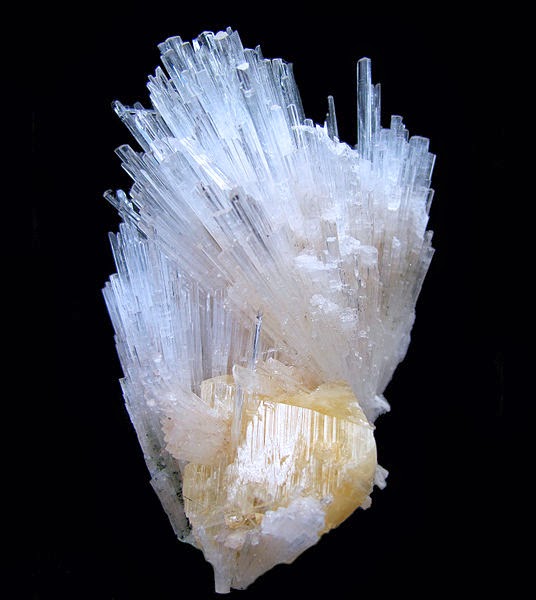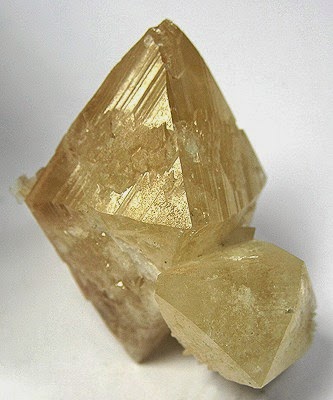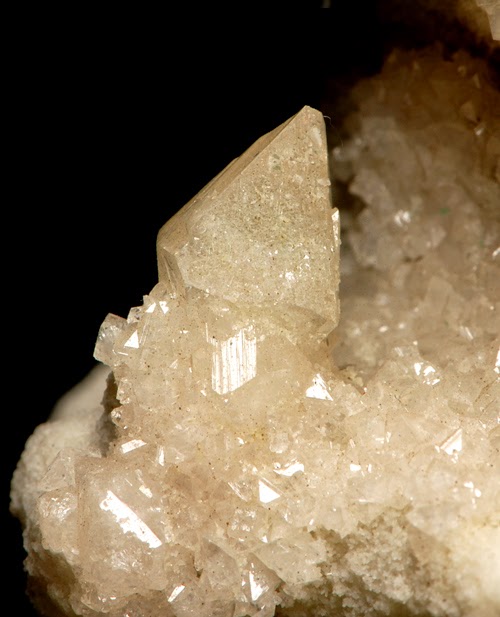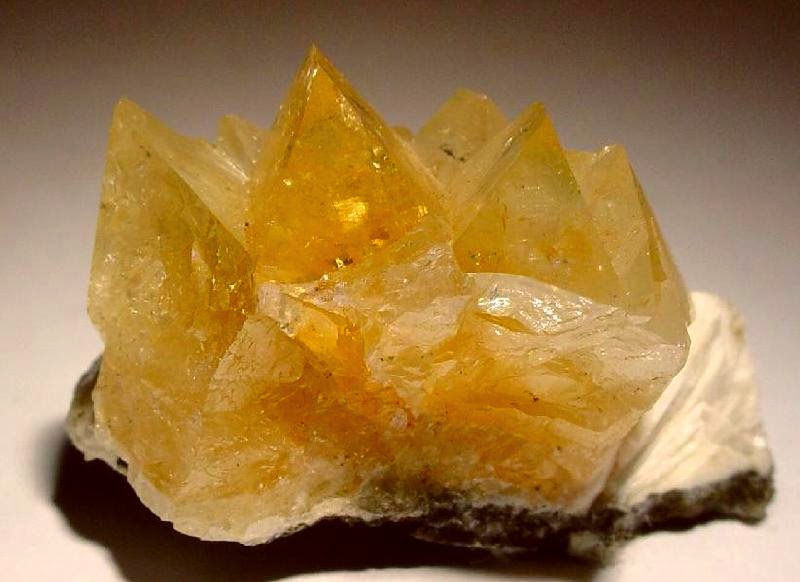
Locality: Peacock Mine, Cuprum, Seven Devils District, Adams Co., Idaho, USA
Name Origin: Named after the American geologist, John Westly Powell (1834-1902).Powellite is a calcium molybdate mineral with formula Ca(MoO4). Powellite crystallizes with tetragonal – dipyramidal crystal structure as transparent adamantine blue, greenish brown, yellow to grey typically anhedral forms. It exhibits distinct cleavage and has a brittle to conchoidal fracture. It has a Mohs hardness of 3.5 to 4 and a specific gravity is 4.25. It forms a solid solution series with scheelite (calcium tungstate, CaWO4). It has refractive index values of nω=1.974 and nε=1.984.Powellite was first described by William Harlow Melville in 1891 for an occurrence in the Peacock Mine, Adams County, Idaho and named for American explorer and geologist, John Wesley Powell (1834–1902).
It occurs in hydrothermal ore deposits of molybdenum within the near surface oxidized zones. It also appears as a rare mineral phase in pegmatite, tactite and basalt. Minerals found in association with powellite include molybdenite, ferrimolybdite, stilbite, laumontite and apophyllite.
History
Authors: MELVILLE
Discovery date : 1891
Town of Origin : PEACOCK CLAIM, SEVEN DEVILS DIST., ADAMS CO., UTAH
Country of Origin: USA
Optical properties
Optical and misc. Properties: Transparent – fluorescent
Refractive Index: from 1,96 to 1,97
Physical properties
Hardness : from 3,50 to 4,00
Density : 4,23
Color : yellow; greenish yellow; greenish; brown; grayish; white; blue; blackish blue; grey; greenish blue
Luster : sub-adamantine; greasy; nacreous
Streak: pale yellow; greenish; grey white
Break: irregular
Cleavage: yes
Photos:













